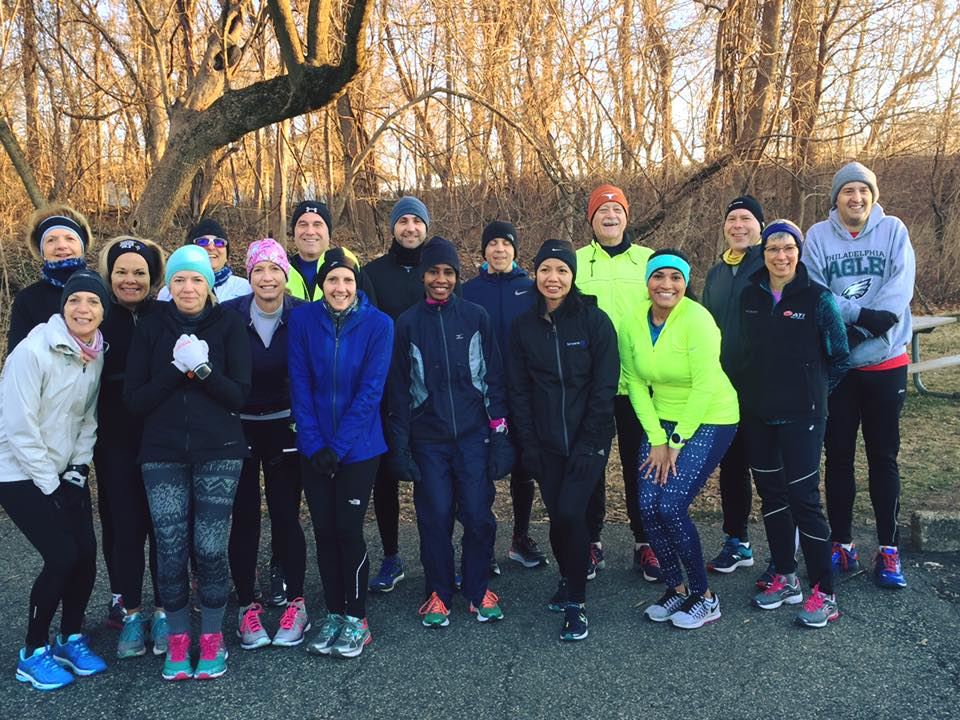Advice for New Runners |
 Get a checkup
Get a checkup
If you are over 40, or have a family history of heart disease or other health problems, see a doctor before you start a regular exercise program.
Get good shoes
Resist the temptation to put on any old pair of vaguely-looking athletic shoes for those first workouts. Worn-out or ill-fitting shoes are one of the most common causes of injury. Go to a specialty running shop, where someone can help you find a pair that offers the fit and support you need. Don’t shop by price, fashion appeal, or bold promises. While you’re at the store, get clothing made with lightweight technical materials (no cotton) that wick sweat away from your skin so you stay cool in the summer, warm in the winter, and dry even when it’s wet outside.
Walk, don’t run
Though some people dismiss “walk” as a four-letter word, it is the most effective way to develop the fitness you need to start running comfortably –without getting hurt. Walking puts your legs and arms through the same general range of motion as running, but without the same impact on your bones and joints.
First, focus on time spent exercising, not pace
During your first months of running, it’s best to focus on the time you spend exercising, rather than pace, or the number of miles you cover and the amount of time it takes to cover those miles. It’s the time that you consistently spend working out that is going to determine how much fitness you develop and the overall health benefits you gain. As you get more comfortable running and walking, you can start to track your pace on each workout to gauge your fitness gains.
Get a plan
Developing a sustainable exercise routine is a balancing act. The trick is to push your legs, lungs, and willpower farther than ever… but not so far that you get hurt and end up sidelined for weeks. While you may not feel like you need a schedule for working out, having a training plan – like the beginners’ plans from Runner’s World – will help you strike that balance. With four to five days of exercise each week, plenty of time for rest, and a gentle, gradual buildup of mileage and speed, you’ll get in shape without getting hurt, one step at a time. Just started exercising for the first time? Get your FREE start walking plan here.
Let the body be the boss
Use a training plan as a guide, , but let your body and your life be the boss. You can move the workouts around so you can fit them into your busy lifestyle. You can repeat each week as many times as you’d like if you don’t feel ready to advance.
Keep a training log
Take good notes on how long and how far you went on each workout and how you felt while you were on the road. You’ll draw confidence from seeing all of your workouts add up. And the next day’s workout won’t seem as intimidating when you see how much you’ve already accomplished.
Make it routine
Establish a workout routine that blends well into the rhythm of your daily life. Figure out what times of day are most convenient to work out, and find a variety of safe, traffic-free routes that you can take on a regular basis. And make sure that you have cleared enough time to work out so that it doesn’t jam up your day.
Measure your effort
From the high-tech to no-tech, it’s easy to gauge your effort and the fitness gains you’re racking up. At first, your primary guage should be “The Talk Test.” Most of your runs should be done at a comfortable pace–one that’s easy enough to feel like you could maintain a conversation. If you’re huffing and puffing you’re going too fast. A heart-rate monitor will track how many beats per minute your heart is taking so that you can make sure you’re working within a particular percentage of your maximum heart rate during every workout. For instance, you’ll want to make sure that you’re running within 60 to 70 percent of your maximum heart rate on most of your workouts. But most experts agree that a widely used formula for finding your maximum heart rate—220 minus your age—may be inaccurate for most people. And even with an accurate max heart rate, there are still going to be limitations when you’re using a heart-rate monitor to determine how hard you’re working. If you’re working out in a gym, other machines might interfere with the signals. If you’re dehydrated, if it’s a very hot day, or if you’re in pain, your heart rate might skyrocket, even if you’re running at a slower pace.
Run your own running life!
Find a reason – and a way of running – that you can fall in love with, and stick with it. Love the trails? Great. Do you use running as your social time – your weekly happy hour with friends? Perfect. Do you rely on your 30- minute daily runs as your daily dose of time to yourself? That’s’ wonderful. Enjoy your time on the treadmill? Fine. Do you rely on your running streak to maintain a healthy body and mind? Perfect. The point is: don’t let anyone else’s definition of success be yours. It’s easy to get sucked into believing you must race, run a certain average pace, register for a marathon, win your age group, or accumulate a certain number of race finishes. All of those are perfectly admirable goals. But it’s important to construct your running life so that it’s a good fit for your lifestyle, your desires, your level of fitness, and your work and family responsibilities. Running should involve hard work and pushing beyond your comfort zone, but it shouldn’t feel like torture. It should be a source of stress relief, not stress.
Remember: the most important thing about your running life is that you enjoy it.
These tips come from Jen Van Allen. Jen is a former Fast Tracks member and the author of four books about running, nutrition, and race training. Learn more about her at jenvanallen.com. She now lives near Portland, Maine.
© Copyright 2025 - Fast Tracks Running Club – Valley Forge
